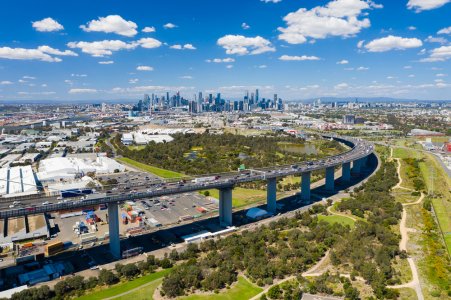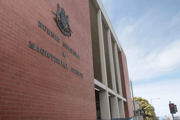State’s new driver licence update leaves more states behind
By
Seia Ibanez
- Replies 50
Smartphones have become the Swiss Army knives of technology—from carrying everything from our calendars to our wallets, it's no surprise that digital driver licences are the next step in the evolution of convenience.
However, not all Australians are reaping the benefits of this modern marvel just yet.
As the latest updates roll out, millions are still in a waiting game, questioning when they can leave their physical cards at home.
Victoria recently joined the digital driver licence program on Monday, 13 May, with the program going live on Wednesday.
According to the spokesperson for the Victorian Government, ‘Around 200,000 Victorians have jumped on board and downloaded their digital licence on their phone within 48 hours of the state-wide launch.’
The Victorian Government also expressed excitement over the public's enthusiastic response, highlighting the readiness of over 4.5 million fully licensed drivers, motorcyclists, and heavy vehicle operators to embrace this change.
Eligible Victorians can access their digital driver licence after setting up their profile using the myVicRoads and Service Victoria apps.
Learners and P-platers will be able to transition to the digital alternative starting in 2025.
The digital license isn't just a static image of your physical card; it's a dynamic, real-time reflection of your driving status.
If your license is revoked or suspended, this will be immediately updated in the digital version.
The convenience extends to proof of identity, with police, businesses, and other authorities able to verify its authenticity through a timed QR code.
While Victoria celebrates this technological leap, the Northern Territory is gearing up for a pilot program set to commence in late 2025.
This leaves residents in the Australian Capital Territory, Western Australia, and Tasmania in anticipation as they have yet to access digital licenses.
In NSW, the uptake of digital licenses is impressive, with 4.5 million people—nearly 75 per cent of drivers—using the digital option via the Service NSW app.
South Australia, the pioneer in this initiative, launched its digital license scheme in 2017, setting a precedent for other states.
Queensland, not far behind, rolled out its digital licenses in October of the previous year, marking another step forward in the nationwide adoption of the technology.
However, the path to digitalisation is not without its bumps.
Tasmania is still exploring the option, with no clear timeline in sight.
WA has made progress by awarding a 16-month contract to local software developers GenVis to create a digital license system.
In the ACT, despite mounting calls for digital licenses, there are no immediate plans to unveil the technology.
 What are your thoughts on the digital driver license rollout? Have you made the switch, or are you still waiting? Share your experiences and concerns with us in the comments below.
What are your thoughts on the digital driver license rollout? Have you made the switch, or are you still waiting? Share your experiences and concerns with us in the comments below.
However, not all Australians are reaping the benefits of this modern marvel just yet.
As the latest updates roll out, millions are still in a waiting game, questioning when they can leave their physical cards at home.
Victoria recently joined the digital driver licence program on Monday, 13 May, with the program going live on Wednesday.
According to the spokesperson for the Victorian Government, ‘Around 200,000 Victorians have jumped on board and downloaded their digital licence on their phone within 48 hours of the state-wide launch.’
The Victorian Government also expressed excitement over the public's enthusiastic response, highlighting the readiness of over 4.5 million fully licensed drivers, motorcyclists, and heavy vehicle operators to embrace this change.
Eligible Victorians can access their digital driver licence after setting up their profile using the myVicRoads and Service Victoria apps.
Learners and P-platers will be able to transition to the digital alternative starting in 2025.
The digital license isn't just a static image of your physical card; it's a dynamic, real-time reflection of your driving status.
If your license is revoked or suspended, this will be immediately updated in the digital version.
The convenience extends to proof of identity, with police, businesses, and other authorities able to verify its authenticity through a timed QR code.
While Victoria celebrates this technological leap, the Northern Territory is gearing up for a pilot program set to commence in late 2025.
This leaves residents in the Australian Capital Territory, Western Australia, and Tasmania in anticipation as they have yet to access digital licenses.
In NSW, the uptake of digital licenses is impressive, with 4.5 million people—nearly 75 per cent of drivers—using the digital option via the Service NSW app.
South Australia, the pioneer in this initiative, launched its digital license scheme in 2017, setting a precedent for other states.
Queensland, not far behind, rolled out its digital licenses in October of the previous year, marking another step forward in the nationwide adoption of the technology.
However, the path to digitalisation is not without its bumps.
Tasmania is still exploring the option, with no clear timeline in sight.
WA has made progress by awarding a 16-month contract to local software developers GenVis to create a digital license system.
In the ACT, despite mounting calls for digital licenses, there are no immediate plans to unveil the technology.
Key Takeaways
- Victoria has introduced digital driver licences, with hundreds of thousands of residents downloading it within 48 hours of the launch.
- The Northern Territory is set to pilot digital licences in late 2025, leaving the ACT, WA, and Tasmania as the jurisdictions without the digital option currently.
- The digital licence will show real-time status updates and can be used as proof of identity, with its authenticity verifiable by a timed QR code.
- Efforts are underway in the remaining regions without digital licences to explore the option, but for some areas, it may be some time before they are available.








